By Annonciata Byukusenge
Marie Claire Uwamariya is an early riser farmer in Gahurire cell, Umuyange village, a remote area in the Ngoma district of the Eastern Province of Rwanda.
She wakes up at 4 am daily and embarks on the agricultural work she conducts on a one-hectare piece of land.
However, every morning, Uwamariya must spend at least two hours trekking and fetching water pumped from the Rwabyuma swamp, Rebero village in Kazo sector.
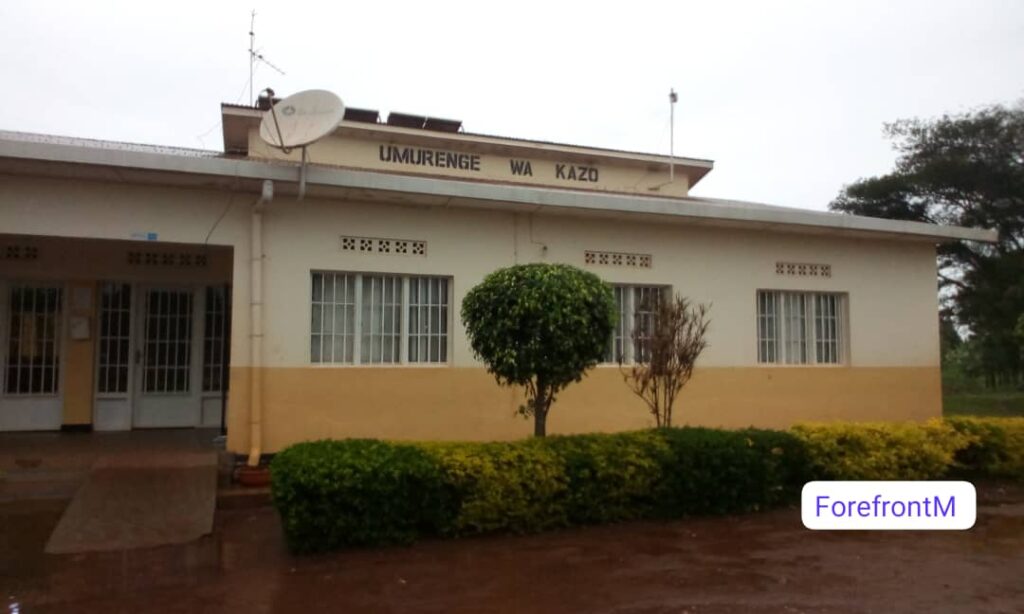
It is a tedious ordeal she wishes could change. “We need water for various household activities, but we don’t have enough,” she says, adding, “We have to travel kilometers and kilometers to access it.”
The 25-year-old is, however, less optimistic that her efforts in fetching and pumping water will improve her family’s quality of life and living standards.
“Young generations in eastern Rwanda are currently playing a vital role in fighting against water shortage challenges, but the impacts of this water shortage are common for the community,” she adds.
Most residents of the Kirehe, Ngoma, Kayonza, Nyagatare, Gatsibo, Rwamagana, and Bugesera districts of the eastern province say that groundwater depletion, as evidenced by wells drawdown, especially during the dry season, is a recurring problem.
Uwamariya says that in her lifetime, she has never seen clean water or a water pipe in her village.
In the rainy season, they praised the Lord. In the dry season, everyone looks crazy and hopeless because they spend much time looking for water, and other activities are negatively affected. In school period, children go to fetch water till 10 am due to long queues at water points. Sometimes children come home without water because of limited energy to fight, and others get hungry before fetching water due to many people at the faucet.
Dusabe Jean de Dieu, another resident of the Gahurire cell, shares the same ordeal. “The water is a big problem, and life is challenging because of using dirty and insufficient water.
He laments that as a result of this, some of their children are suffering from bilharzia and other diseases.
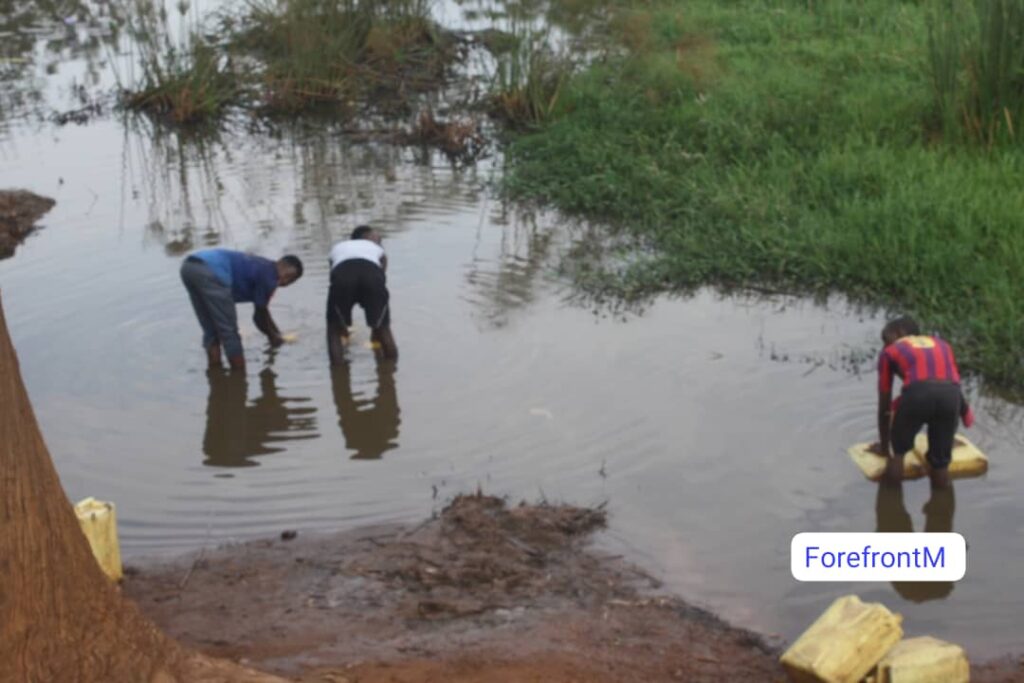
“We can’t get enough agricultural production because there is not enough water for irrigation,” he explains.
“From my childhood till now I fetch water in Cyohoha Lake, and now I am 32 years old. We use that water to drink, for domestic activities, and construction activities. If you need clean water, you pay between 200 Rwfs – 500 Rwfrs depending on the distance. For myself, I fetch water as my daily job because I carry five jerry cans. The shortage of water is a challenge in our village.” Said Nsabimana.
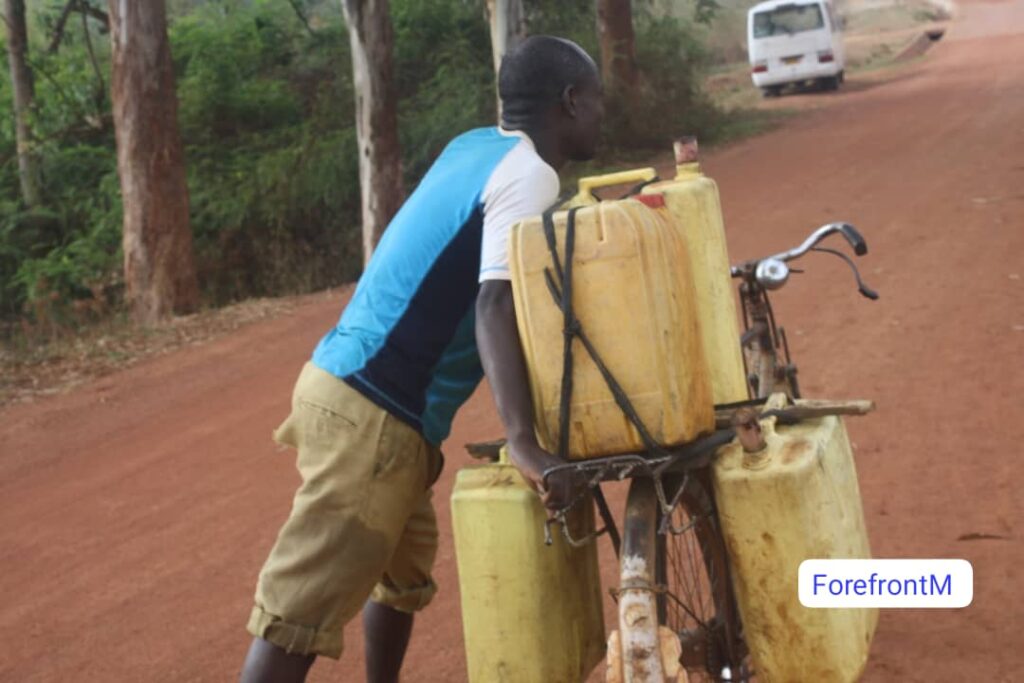
Overuse of groundwater
A cross-section of Eastern Province residents attribute water shortage to the overuse of groundwater for various activities.
Laurence Uwamariya, a farmer in Rusumo village, Nyankurazo cell, Kigarama Sector in Kirehe district, wonders if policymakers know that the groundwater may soon get depleted in the region.
She says that domestic water demands contribute to the overuse of groundwater, especially in the dry seas, where people rely heavily on groundwater for agriculture and household activities.
However, not all hope is lost. In this province, a multimillion Rusumo Hydropower plant is being established. To area residents, this is a game changer.
Laurence Uwamariya says they expect to benefit from the Rusumo project to increase crop production.
“Our hope is based on the dams that we expect to have after the building activities at Rusumo Hydropower plant. We have dams linked to Rusumo waterfalls that will possibly provide enough water and help us in irrigation,” she notes.
Rwanda’s eastern province, where drought prevails, covers three central water bodies and or catchments: Muvumba, Akagera Upper, and Akagera Lower.

Dr. Judith Uwihirwe, Lecturer at the University of Rwanda, College of Agriculture, Animal Sciences and Veterinary Medicine (CAVM) and a Researcher in hydrogeology and related hazards, explains that the overuse of groundwater may lead to its complete depletion, aquifer drying, and occurrence of drought.
She underscores the need for regular monitoring of groundwater and different techniques that could be used for groundwater monitoring. “In eastern Rwanda, most people rely on groundwater for domestic use and irrigation. However, this reliance on groundwater may lead to over- exploitation of groundwater storage and thus complete depletion and aquifer dry up, which is difficult to reverse,” Dr. Uwihirwe explains.
According to her, regular monitoring of groundwater resources is necessary to prevent the complete depletion of groundwater and to take timely measures to preserve or restore this vital resource, thereby preventing drought hazards.
In situ, for example, groundwater monitoring through boreholes or groundwater monitoring wells is being used, while in the eastern part of Rwanda, about six boreholes or groundwater observation wells were installed in 2016.
However, the majority of them are currently dormant.
Additionally, these boreholes don’t provide the spatial variability of groundwater due to their sparse distribution network.
Therefore, other alternative techniques of groundwater monitoring have to be adopted despite the need for in-situ information to calibrate and validate this source of groundwater information.
The global gravity groundwater project (G3P) is one of the alternative sources of groundwater information that came as a solution for regular monitoring of groundwater to prevent its overuse, which may lead to permanent depletion, aquifer dryness, and drought hazards.
Dr. Uwihirwe has used the G3P data to explore the historical situation of groundwater storage change in the eastern province of Rwanda from 2002 to 2020.
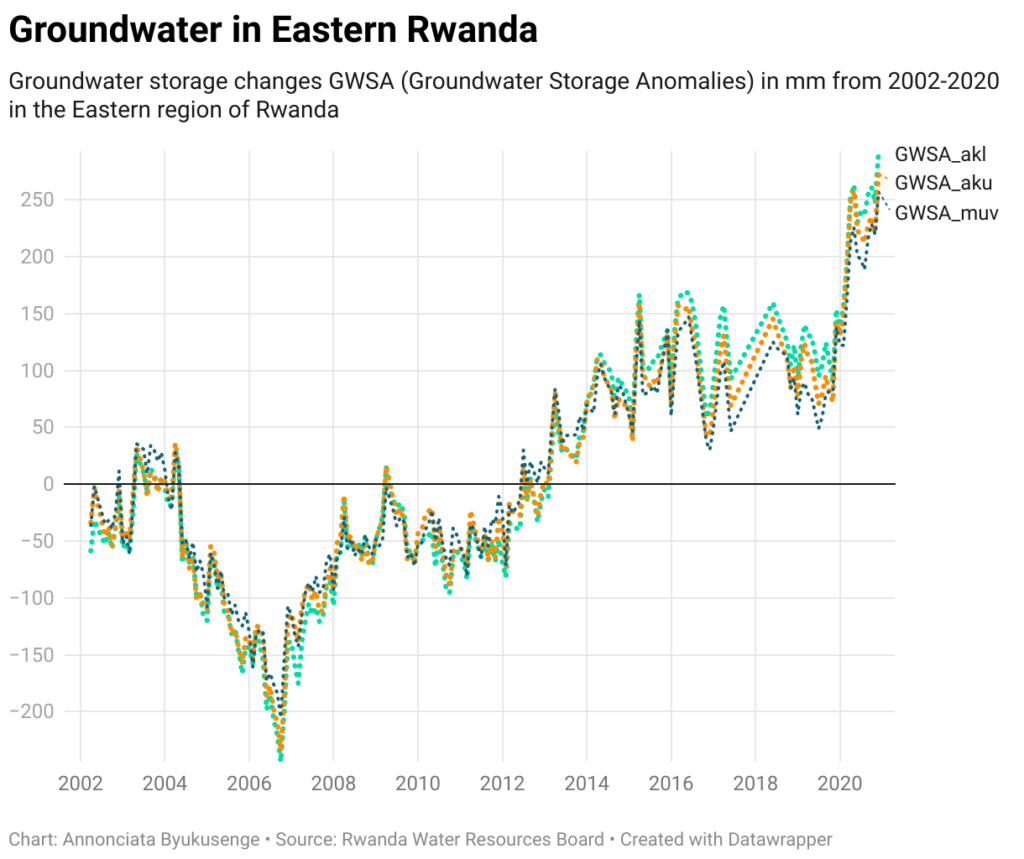
All water bodies and catchments of the eastern province, Muvumba, Akagera Upper, and Akagera Lower, experienced similar trends in groundwater depletion, but the Akagera Lower catchment was the driest.
Between July 2012 and 2020, groundwater replenishment and restoration of groundwater storage is observed in all catchments.
The situation of groundwater storage anomalies (GWSA) till the year 2020 indicates a promising situation that needs to be preserved to avoid the drawback situation experienced in the years 2004-2012.
Alternative Sources of Water in Eastern Province
Mukantagwabira Béatha a 40-year-old mother of three in the Kibungo sector, Gahima cell in Ngoma district, says she and several other residents of the eastern region are looking for solutions to ease water scarcity.
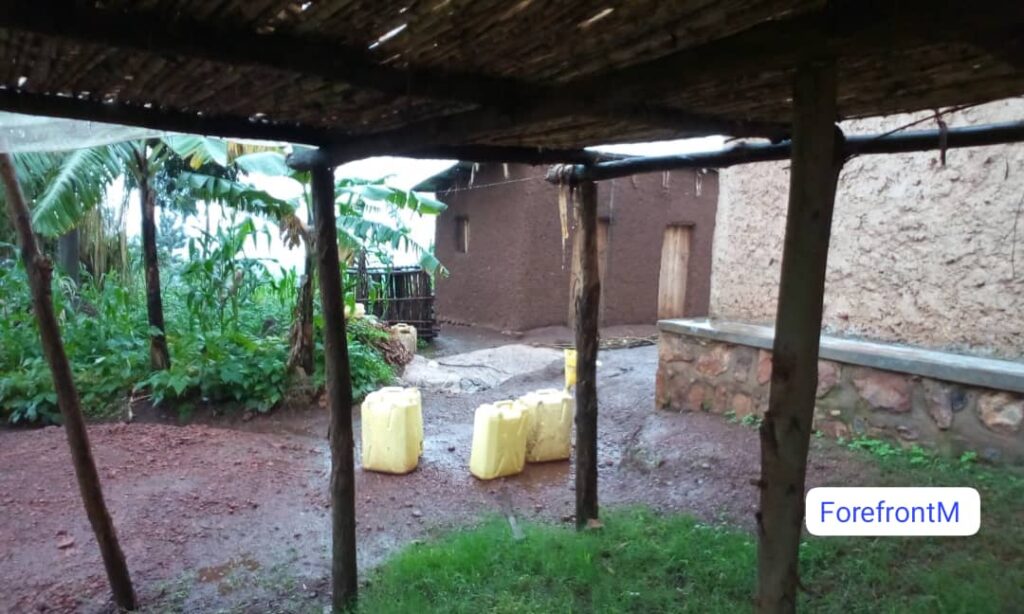
One positive development is the establishment of a water source in Kibungo Sector.
“Now we are comforted because the Nile Equatorial Lakes Subsidiary Action Program (NELSAP) provided us with water. But because many people use it and we use it in irrigation, we may lose it again if there is no proper management,” Mukantagwabira observes.
Apart from the Kibungo sector, people who live in the Kazo sector use rainwater for domestic activities during the rainy season, which also comes at a cost.
“Rainwater harvesting and storage is very expensive because one needs a tank or other tools to help with water storage. I don’t have a tank because it is expensive for me, but I have a big bucket and many jerrycans that I use for rainwater harvesting and conservation,” says Dusabe Jean de Dieu, a resident of Umuyange village.
An interview Forefront Magazine conducted with Mr. Celestin Mutabazi in charge of Infrastructure and Natural Resources in Ngoma district, who said that the water station was built in partnership with their partner NELSAP which is implementing the Regional Rusumo Falls Hydro Electric Project (RRFHEP).
“Our district is the one in the Eastern Province that was faced with water issues, but two years ago this problem was resolved. Our people have clean water near their homes and livestock improved.”
He added that they expect that the overuse of water in their district will be resolved because they developed water management strategies in each village.
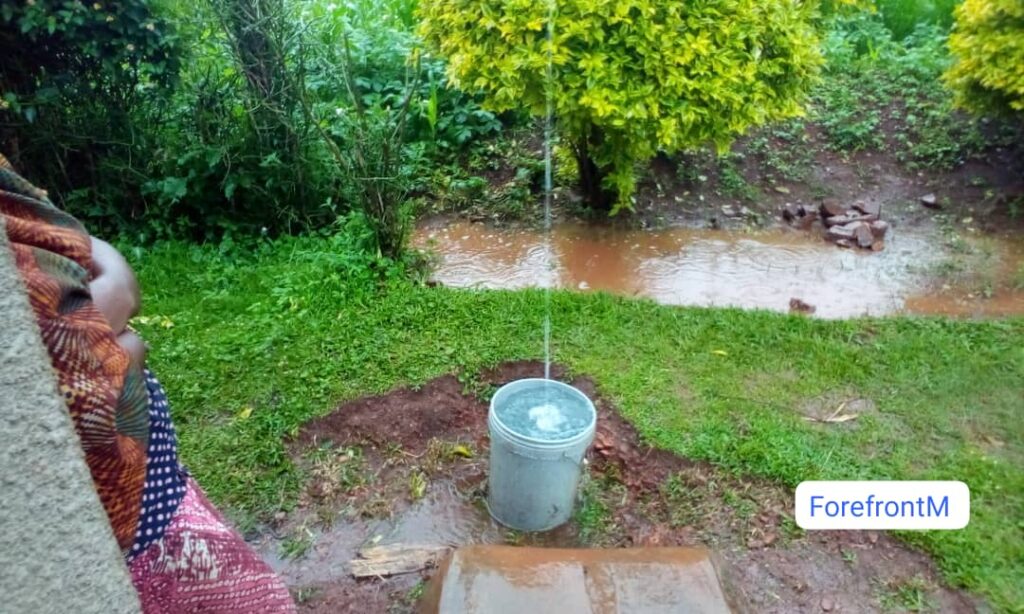
Based on GWSA analysis and the situation until 2020, Dr. Judith Uwihirwe says that groundwater can still be used for domestic and Agricultural activities in the eastern region of Rwanda. However, she highlights that regular monitoring of groundwater storage change has to be kept to take timely appropriate measures in case of severe decline.
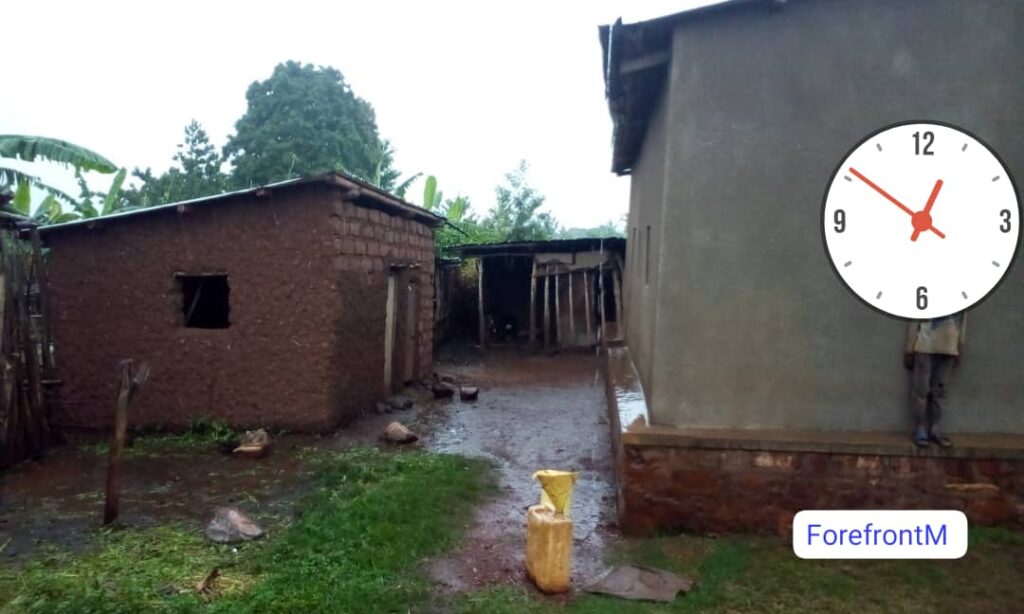
According to Dr. Uwihirwe, possible solutions include finding alternative sources of water, putting limitations on groundwater use for irrigation, putting regulations and limitations on groundwater pumping, and adopting groundwater preservation, restoration, and replenishment techniques to ensure the balance between groundwater recharge and discharge in the eastern region of Rwanda.
This story has been produced in partnership with InfoNile and with funding from JRS Biodiversity Foundation and IHE Delft’s Water and Development Partnership Programme. It’s a collaborative effort between journalist and scientist, Annonciata Byukusenge and Dr Judith Uwihirwe.
Dr Judith Uwihirwe is the Ag. Director of Research and Innovation at the College of Agriculture Animal Sciences and Veterinary Medicine, University of Rwanda. She’s currently Ag. Director of Research and Innovation and Senior Lecturer at the University of Rwanda-College of Agriculture Animal Sciences and Veterinary Medicine (UR-CAVM)

